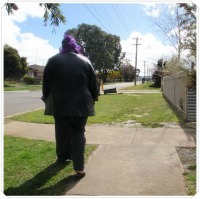Disadvantaged communities

The World Health Organisation recognises transport as a major social determinant of health. Building a reliance on cars into the transport system further isolates those who don't have a car or are unable to drive, including the young and the old.
Productive Cities: opportunity in a changing economy, details how lower income households are being forced to the outer suburbs, with poor access to transport and employment. The authors provide a compelling case for providing more housing in inner suburbs, which are more walkable.
In designing prorams to support walking by disadvantaged groups, the National Institute for Health and Clinical Excellence notes:
- The main barrier to walking for people from disadvantaged areas is safety. Because of this, social interaction is an enabler and having a walking partner including friend, child or dog is an incentive, particularly for women.
- There are gender differences in perceptions of walking for fitness, with males not considering walking to be 'exercise'.
- Women who live in disadvantaged areas without access to a car report feelings of social exclusion due to having to walk in neglected areas and often with very young and tired children. These women feel concerned for their children's safety at busy roads.
Examples
Access the World Health Organisation's Policy summary "Physical activity promotion in socially disadvantaged groups: principles for action." This document includes case studies and examples including an emphasis on the role of the built environment.
Various programs in lower socio-economic areas are reviewed in VicHealth's Streets Ahead 2008-2011. See particularly the Brimbank case study in the suburbs of Albion and Ardeer.